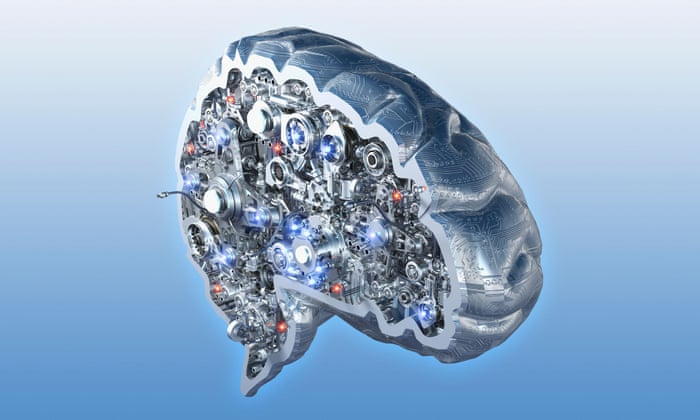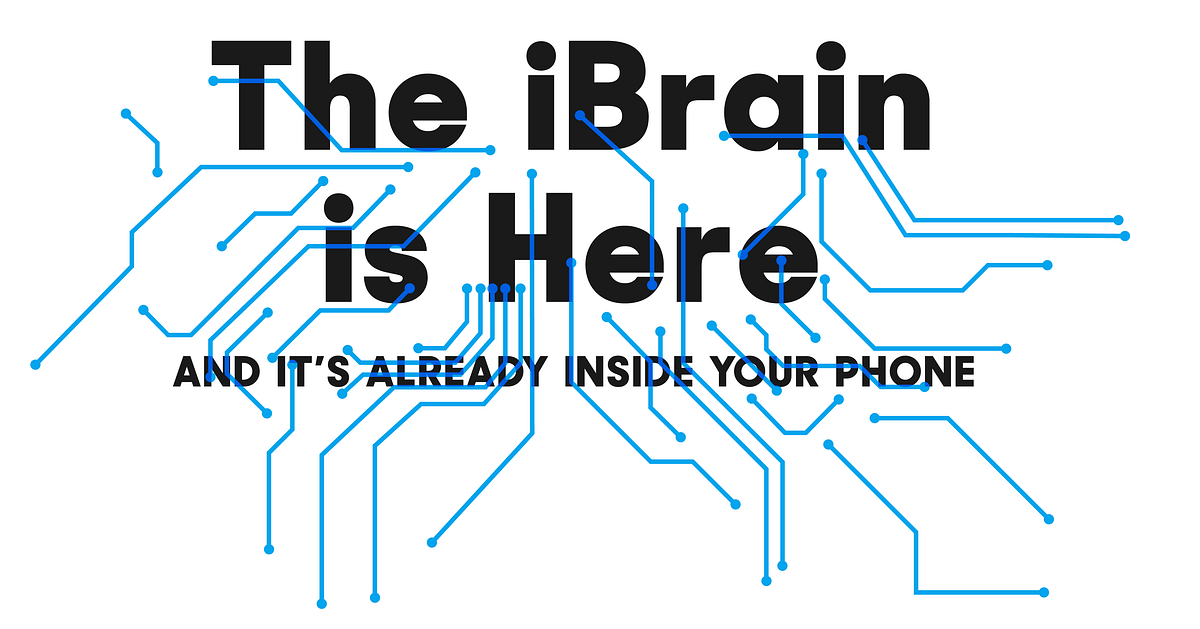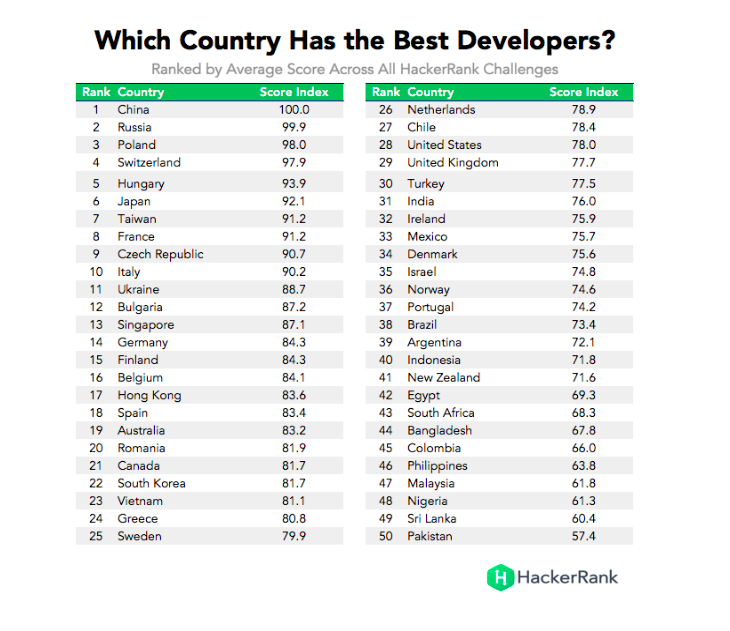Sections
The Third Sphere
[avatar user=”malm” size=”small” align=”left” link=”file” /]
The Guardian review of Yuval Harari’s Homo Deus suggests it will become a valuable addition to the AI canon. The review outlines a dark vision of an unknowable future heading to us at breakneck speed in which the religion of “dataism” is becoming ever more prevalent and human intelligence will be overwhelmed by that of the machine variety whereupon it will be as redundant and subordinate to its superior as animals are to us. It’s an argument that has been covered at length including Nick Bostrom and also Tim Urban in an epic post on the implication for humanity of artificial superintelligence (ASI). Those whom the gods would destroy they first quantify:

At the heart of this spellbinding book is a simple but chilling idea: human nature will be transformed in the 21st century because intelligence is uncoupling from consciousness. … the world of 2100 is at present almost unimaginable. We have no idea where we’ll fit in, if at all. We may have built a world that has no place for us.
The Centre for the Study of Digital Life sees the rise of ‘dataism’ and the singularity mindset as the harbinger of a new third sphere of influence that is distinct and “alien” from the older East-West paradigm. Its hallmark is a positivistic outlook on the prospect of computing technology improving the human condition with little consideration for alternative perspectives or indeed for cautious application of the precautionary principle. Breaking things and moving fast is arguably a core part of the worldview. It’s an approach that has advantages when developing a web site but doesn’t apply evenly everywhere. It is particularly counterproductive when designing products that need to work within a complex ecosystem and there is evidence to suggest that its over-zealous application may be implicated in the recent flatlining of consumer sentiment around smart home hype. In a headlong rush to get something, anything out to market, too many smart home propositions are being shipped half-baked, insecure and incompletely tested, helping to contribute to the Internet of Broken Things:
Natural Language Processing
The potential for tech to disappoint as an underlying theme this week. Fred Wilson relates to it in a recent update checking in on where we are with chatbots suggesting they have gone well past the peak of inflated expectations and are now heading down towards the trough of disillusion. His takeaway:
AI driven chat bots have underwhelmed and that conversational UIs are not what users are looking for.
Tim O’Reilly disagrees with that latter point asserting that Amazon’s Alexa platform “demonstrates that conversational interfaces can work, if they are designed right“:
Unlike agents that take the model of “ask me anything” and often fail ungracefully (Siri), or trying to guess what I might want and surface that information unasked (Google Now), Amazon has done a brilliant job of information architecture. … There’s real evidence of clear and consistent human design anticipation throughout the product. This allows Alexa to appear more intelligent than she actually is.
This important paper courtesy of Andrew Ng at Baidu and Stanford researchers provides further evidence that we are on the cusp of a seismic paradigm shift away from keyboards to voice-based input interfaces:
We found that with speech recognition, the English input rate was 3.0x faster, and the Mandarin Chinese input rate 2.8x faster, than a state-of-the-art miniature smartphone keyboard. Further, with speech, the English error rate was 20.4% lower, and Mandarin error rate 63.4% lower, than the keyboard. Our experiment was carried out using Deep Speech 2, a deep learning-based speech recognition system, and the built-in QWERTY or Pinyin (Mandarin) Apple iOS keyboards. These results show that a significant shift from typing to speech might be imminent and impactful. F
At the core of this shift is the immense spooky power of sequence-to-sequence learning powered by RNNs. This excellent Medium post provides an excellent high level introduction to how this technique works and can be applied to language translation problems.
Machine learning researchers only invented [sequence-to-sequence learning] two years ago, but it’s already performing as well as statistical machine translation systems that took 20 years to develop.

Steven Levy’s exclusive interview with key Apple execs attempts to set the record straight on “how AI and machine learning work at Apple“. It’s a fascinating read which suggests that Apple already employs a lot of machine learning techniques within its products across a whole host of features but doesn’t make much fanfare of this – the company’s engineering efforts are more internally focussed on product than external publication to the wider research community. Reading between the lines, much of their work centres around models built on the 200MB or so of user data gathered per phone. Tight privacy regulations ensure that this data is not scooped up and sent to Apple’s backend for aggregation unlike say Google.

Artificial Intelligence
News that Facebook has fired human editors and moved to an algorithm-only method for generating trending topics created some noise with the suggestion that it has been a “disaster” in early use. A few months ago the Guardian published an exposé highlighting a “toxic” work environment in which engineers appeared to dominate curators. Presumably the engineers will now be free to adapt their approaches to improve results.
This Google research post on text summarisation with TensorFlow using sequence-to-sequence learning powered by RNNs provides good insight into how that technique can be used to produce state of the art headline generation results:
It turns out for shorter texts, summarization can be learned end-to-end with a deep learning technique called sequence-to-sequence learning, similar to what makes Smart Reply for Inbox possible. In particular, we’re able to train such models to produce very good headlines for news articles. In this case, the model reads the article text and writes a suitable headline.
Even the London Review of Books is unable to ignore the impact of Machine Learning and published this pretty comprehensive 5000 word essay covering the whole field.
Very impressive article from Ehren J Brav on how Deep Mind’s Atari Deep-Q Network code can be adapted to successfully play the more sophisticated Super Mario Brothers albeit after a lot of training.
Cloud
Good picture of parallel evolution across different aspects of IT over the last decade:
I dig this slide from @kernelcdub. IT evolution doesn't happen on a single axis. pic.twitter.com/2RPomCu0xy
— Aaron Williams (@_arw_) August 25, 2016
Some of those insights are reflected in this McKinsey interview with Lenovo’s data center chief which underscores the huge cultural shift that needs to occur to succeed away from an internal company focus to an external consumer centric mindset:
Your whole business model has to change as you move from a product-centric company to a customer-centric company. For instance, we had to change our product-development processes—the inputs are completely different from what they were in the past, with much more extensive customer-feedback mechanisms. We had to evolve our products constantly. We had to reduce our time to market. We had to revamp our supply chains.
Good analysis of how the International Consortium of Investigative Journalists used a combination of Amazon cloud infrastructure, parallel OCR jobs and Neo4j graph database to build a comprehensive picture of the huge Mossack Fonseca Panama Papers data leak.
Mobile and Devices
This week’s BBC Click called “Designed in China” is well worth watching. In it, presenter Spencer Kelly gets a guided tour of Shenzen with none other than legendary hardware hacker, Andrew “Bunnie” Huang.

The LG V20 flagship Android smartphone looks like it will persist with the “second screen” notification pane debuted in its predecessor in spite of lukewarm feedback:
The second screen is just what it sounds like: a separate, always-on display that sits on top of the main smartphone screen for showing notifications, widgets, and other information gleaned at a glance
Samsung’s W2017 an updated take on their own very well received dual screen Android proposition the W2016 also looks like it will retain key elements of the original clamshell design with updated hardware. Codenamed “Veyron” it could become something of a unique high end flagship in their Android portfolio:
It’s worth checking out if your Android phone comes with System UI tuner support enabled as follows:
![]()
Security
The story behind the latest iOS 9.3.5 patch for iPhone is simultaneously disturbing and revealing in terms of the level of international “collaboration” and effort expended on breaking into the phone of a civil rights activist in the Middle East. The trail leads back to the phone of a UAE citizen and the apparent involvement of a shadowy Israeli outfit:
NSO Group doesn’t have a website. They are an Israeli-based “cyber war” company owned by an American venture capital firm, Francisco Partners Management, and founded by alumni of the infamous Israeli signals intelligence agency, Unit 8200. … there is a major continuing problem with autocratic regimes abusing advanced interception technology to target largely defenceless civil society organizations and human rights defenders
No wonder this tweet struck a chord:
Heard from an employee of a Fortune 100 company, IT is cutting off any iPhone without the latest patch trying to connect.
— SwiftOnSecurity (@SwiftOnSecurity) August 26, 2016
Software
TeamGB may have surpassed all expectations in the recent actual Olympics managing to famously lift themselves above China in the final medal table. However they are far behind in the programmer Olympics in the according to this HackerRank analysis:
“According to our data, China and Russia score as the most talented developers. Chinese programmers outscore all other countries in mathematics, functional programming, and data structures challenges, while Russians dominate in algorithms, the most popular and most competitive arena. While the United States and India provide the majority of competitors on HackerRank, they only manage to rank 28th and 31st.”
Rewarding FirstRound interview with Lou Montulli on the benefit of “creator driven cultures” and the particular catholic mindset required to drive and maintain it. A key observation is to move away from thinking in terms of features to thinking in terms of customer problems – a distinction that crucially moves engineering closer to understanding user needs:
If there is one linchpin to a creator-driven culture, it is the relentless practice of distributing a problem across more people, not just the product features that address that problem.
Great insights in this review of the state of the art in automated web scraping involving Selenium, phantomJS, node and a host of JavaScript tricks.
Another good review, this time of the subtle difficulties of scaling WebRTC for web-based VOIP beyond a hackathon room – it’s not really as magic for production as all those quickfire demos might lead you to believe:
In the past year I have been hearing more and more people talk about WebRTC and its plugin-less and auto-magical nature. At hackathons kids pump out amazing projects that allow for rich server-less communication between browsers, polished in just a few hours. Scores of people talk about how you can get a WebRTC based application up and running in 5 minutes flat.
All of this is true when you are developing an application for communicating with people in the same room.
Hillary Clinton’s campaign setup includes a team of 70 engineers working on pushing out “50 different software tools and products” and subject to all the usual growing pains of an agile devops shop:
“some Google engineers on the team hadn’t used GitHub before, and “they were made fun of for this by other team members. We also had bad experiences with team members shaming other team members for wanting to use certain technologies that they have experience with, like MongoDB.”
Science
Proxima b was revealed this week to be our closest exoplanet just 4.2 light years from earth but similarities with earth end there:
Given the proximity to its star, Proxima b is also subject to less pleasant factors like ultraviolet and X-ray flares that are 100 times the intensity of what Earth receives from the sun.
The discovery inevitably raised questions about the Fermi Paradox. Maybe we are in fact amongst the earliest intelligent life in a universe that may not attain “peak life” until “trillions of years hence.”
Natural language processing in the human brain:
It seems the different neural patterns of a language are imprinted in our brains for ever, even if we don’t speak it after we’ve learned it. Scans of Canadian children who had been adopted from China as preverbal babies showed neural recognition of Chinese vowels years later, even though they didn’t speak a word of Chinese.
Fiction and Politics
The BBC consolidated list of the 21st Century’s greatest films and compiled this top 10:
10. No Country for Old Men (Joel and Ethan Coen, 2007)
9. A Separation (Asghar Farhadi, 2011)
8. Yi Yi: A One and a Two (Edward Yang, 2000)
7. The Tree of Life (Terrence Malick, 2011)
6. Eternal Sunshine of the Spotless Mind (Michel Gondry, 2004)
5. Boyhood (Richard Linklater, 2014)
4. Spirited Away (Hayao Miyazaki, 2001)
3. There Will Be Blood (Paul Thomas Anderson, 2007)
2. In the Mood for Love (Wong Kar-wai, 2000)
1. Mulholland Drive (David Lynch, 2001)
Talking of films, the jaw-dropping turn from Donald Trump’s personal doctor provided confirmation that his campaign team is pure Hollywood, A Country for Old Men:
Everyone involved in the Trump campaign is a Coen brothers character https://t.co/z33hKSbeFg
— Benedict Evans (@BenedictEvans) August 27, 2016
Martin Jacques in the Guardian suggests that the neoliberal compact that dominated politics in the West from the ascendency of Thatcher and Reagan for 35 years is now dead. In his view, those that protest simply can’t see what has happened and that it is in at all clear what comes next after the inchoate anger of a largely class-based mass rebellion:
“‘Populism’ is the label that political elites attach to policies supported by ordinary citizens that they don’t like.” Populism is a movement against the status quo. It represents the beginnings of something new, though it is generally much clearer about what it is against than what it is for. It can be progressive or reactionary, but more usually both.
Joseph Stiglitz, one of the leading lights of post-neoliberalism agrees that “market fundamentalism” and its tools such as the euro have had their day but it remains a remarkably resilient concept and one senses the transition to whatever follows will not be simple or quick. Seems appropriate to link in a powerful, distant echo from the tail end of the last adoption cycle in 1980:
Work Culture
Working from home is “ruining our work-life balance” but if you’re a prepper in the Montana Redoubt, working from anywhere other than home presumably isn’t an option:





